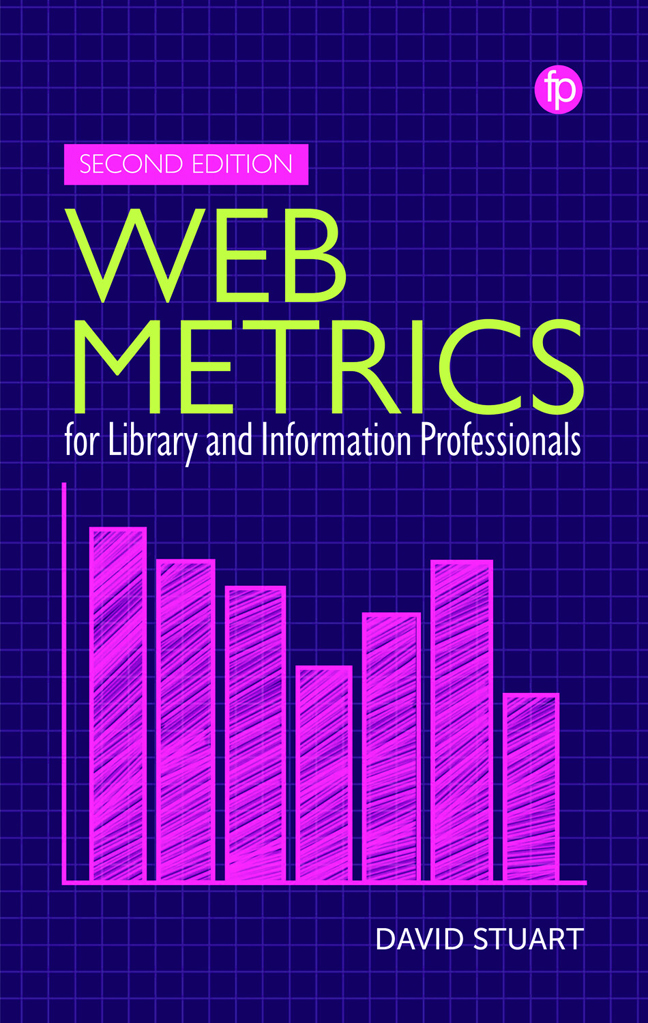Book contents
- Frontmatter
- Contents
- Figures and Tables
- About the Author
- Preface to the Second Edition
- 1 Introduction
- 2 Bibliometrics, Altmetrics, Web Metrics and Webometrics
- 3 Data Collection Tools
- 4 Evaluating Web Impact
- 5 Evaluating Social Media Impact
- 6 Relational Web Metrics and Social Network Analysis
- 7 Web Bibliometrics
- 8 Web Metrics for Data and Code
- 9 The Future of Web Metrics and the Library and Information Professional
- References
- Index
8 - Web Metrics for Data and Code
Published online by Cambridge University Press: 20 December 2023
- Frontmatter
- Contents
- Figures and Tables
- About the Author
- Preface to the Second Edition
- 1 Introduction
- 2 Bibliometrics, Altmetrics, Web Metrics and Webometrics
- 3 Data Collection Tools
- 4 Evaluating Web Impact
- 5 Evaluating Social Media Impact
- 6 Relational Web Metrics and Social Network Analysis
- 7 Web Bibliometrics
- 8 Web Metrics for Data and Code
- 9 The Future of Web Metrics and the Library and Information Professional
- References
- Index
Summary
Introduction
Much of the discussion up to now has been about the potential of web metrics to gain insights into the web of documents: how many times has a particular document been mentioned on the web? How many times has a web page been visited? How many times has a wiki page been updated? The rise of open access has also been accompanied by the rise of open code and open data, and it is increasingly important for information professionals to understand how these resources are being accessed. Can researchers show that the data and code that they are increasingly obliged to place online is actually being used?
This chapter starts with a description of this ‘web of data’, data available in a machine-readable format and the implications of structured data for the development of various kinds of web metrics. This is followed by an exploration of some of the approaches that have been taken to measuring the impact of code, which is also seen as an increasingly important part of a researcher's output.
The web of data
The term ‘web of data’ is used here to refer to data that is structured in machine-readable form and has been published openly on the web (Stuart, 2011). It is not separate from the existing web but, rather, may refer to a subset of it, and includes a wide range of different technologies, from a Google spreadsheet hosted in the cloud, to an Excel spreadsheet contained within an institutional repository; from the APIs providing access to data from social media sites and services, to web pages with semantic mark-up. Some of these technologies have already been introduced in the course of this book. Here we consider some of the technologies that contribute to the web of data in a bit more detail, considering both the advantages and disadvantages of the different technologies, before moving on to discuss some of the implications of the web of data (in its various guises) for the development of web metrics.
As has been argued elsewhere, librarians have a long history of providing access to documents, and are ideally positioned for facilitating access to the increasingly large web of data (Stuart, 2011). Facilitating access to the web of data provides a new avenue for information services to develop as the traditional information services rapidly evolve.
- Type
- Chapter
- Information
- Web Metrics for Library and Information Professionals , pp. 141 - 152Publisher: FacetPrint publication year: 2023



